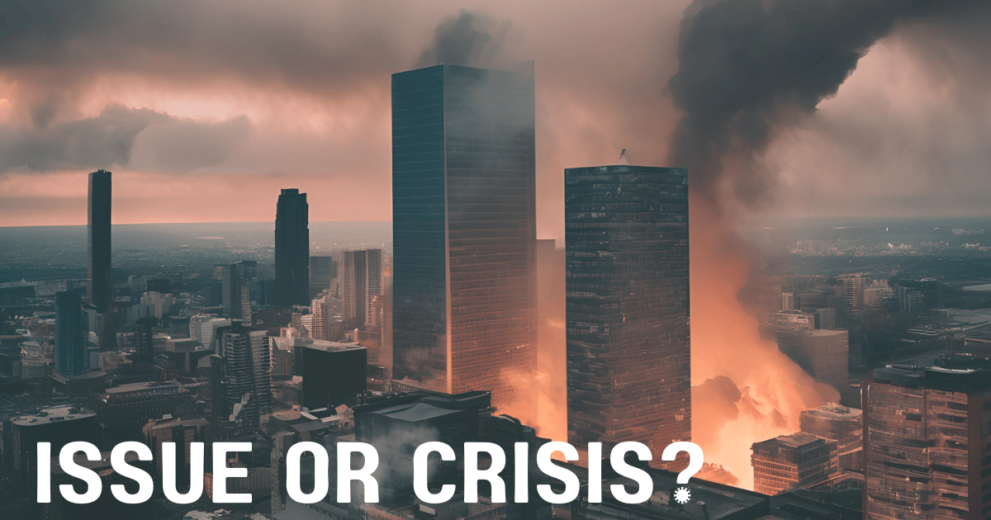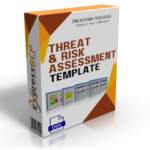Understanding the Critical Threshold for Crisis Management
In the world of business, issues arise every day. They’re part of the natural ebb and flow of operations—whether it’s a delayed shipment, a temporary IT glitch, or a staffing shortage, businesses are designed to handle these problems through established procedures and management structures. But sometimes, an issue escalates, crosses a critical threshold, and becomes something far more serious: a crisis.
Recognizing the Signs: When Normal Operations Are No Longer Enough
The difference between an issue and a crisis isn’t always immediately clear. Most crises start as small problems, but the defining moment comes when they grow beyond the ability of the day-to-day management to control. This is when crisis management, a specialized and strategic approach, becomes essential.
So, how do you know when an issue has turned into a crisis? Here are key indicators:
- Widespread Impact: Unlike a typical issue that might affect a single department or function, a crisis has the potential to disrupt the entire organization. When the problem spreads across multiple business units, impacting operations, finances, or reputation on a broader scale, it’s no longer a contained issue.
- Escalation of Stakeholder Involvement: Issues are often handled internally, with minimal external visibility. However, a crisis demands attention from external stakeholders such as customers, regulators, investors, and the media. If external communications and damage control become necessary, you’re dealing with a crisis.
- Uncertainty and Rapid Change: A key characteristic of a crisis is the level of uncertainty it introduces. Unlike day-to-day problems, where solutions are often known, crises bring unpredictable variables. This uncertainty, coupled with the need for rapid decision-making under pressure, is a clear sign that you’ve crossed the line into crisis territory.
- Inadequacy of Existing Management Structures: Day-to-day management structures are designed to handle routine operations and problems. But in a crisis, these structures quickly become overwhelmed. When your typical decision-making processes and resources are no longer sufficient to address the problem at hand, it’s a sign that specialized crisis management is required.
- Reputational Risk: One of the most telling signs of a crisis is the threat to your organization’s reputation. A crisis often involves a public dimension, where the perception of your company by customers, stakeholders, or the general public is at stake. This is a clear signal that you’ve moved beyond a normal issue.
When Crisis Management Becomes Essential
Once it’s clear that an issue has escalated into a crisis, the approach must shift from routine management to crisis management. Here’s why:
- Specialized Focus: Crisis management requires a different skill set and focus than everyday problem-solving. It involves coordinated efforts across the organization to stabilize the situation, minimize damage, and communicate effectively with all stakeholders. This often means establishing a dedicated crisis management team with the authority to make decisions quickly and decisively.
- Speed and Agility: Time is of the essence in a crisis. The usual deliberative decision-making processes are too slow. Crisis management relies on speed and agility—decisions must be made rapidly to prevent the crisis from escalating further. This often requires breaking away from the traditional chain of command and empowering crisis leaders to act.
- Cross-Functional Coordination: In a crisis, every part of the organization may be impacted. Crisis management requires a level of cross-functional coordination that goes beyond the capabilities of routine management. This means breaking down silos and ensuring that all parts of the organization are working together towards a common goal.
- Effective Communication: Communication is critical in crisis management. Unlike day-to-day issues, where internal communication is often sufficient, a crisis requires a comprehensive communication strategy that includes both internal and external stakeholders. This involves clear, transparent, and timely messaging to manage perceptions and maintain trust.
The Importance of Preparedness
The best crisis management begins long before a crisis emerges. It involves preparing your organization to recognize when an issue is escalating and having a plan in place to respond effectively. This means training your teams, establishing a crisis and business continuity management framework, and conducting regular crisis simulations to ensure that when the time comes, your organization is ready.
Crises are inevitable in today’s complex and interconnected world. The key to surviving and thriving through them lies in your ability to recognize when an issue has crossed the line into crisis territory and in having the structures, plans, and people in place to manage it. Because when an issue becomes a crisis, the ability to pivot quickly and decisively is what will make the difference between recovery and disaster.
So, now what?
Issues are part of every business. But crises are a different beast altogether. Recognizing when an issue becomes a crisis—and responding accordingly with strategic crisis management—can mean the difference between a temporary setback and long-term damage. Remember, a crisis occurs when day-to-day management capabilities are insufficient to manage the problem. When this happens, it’s time to shift gears, activate your crisis management team, and steer your organization back to safety.
Preparedness, speed, coordination, and communication are your best tools in navigating the storm. Don’t wait until it’s too late to deploy them.







